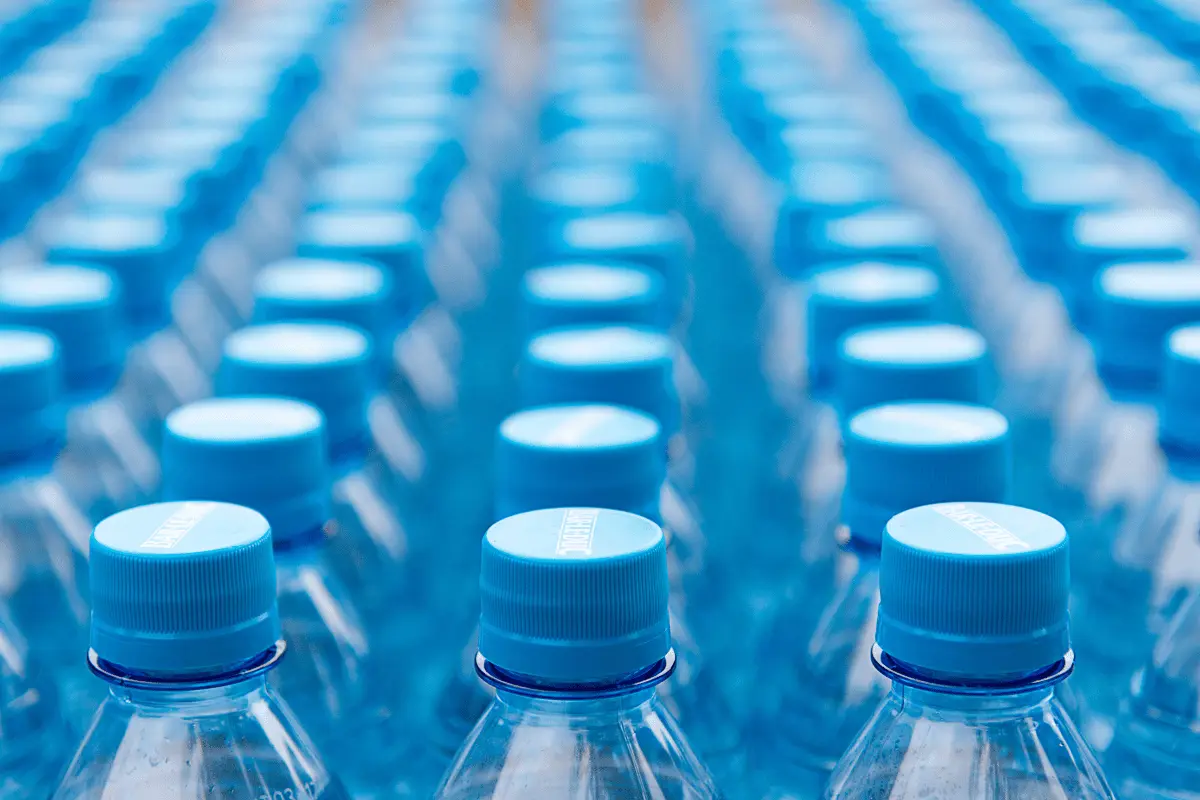Plastic bottles have become an essential part of our daily lives, and there’s no denying that. Did you know that about 583.3 billion plastic bottles were manufactured in 2021 alone? However, due to awareness about global warming and the government’s ban, factories have lowered their production rate in the last two years. But the one thing that many people still don’t know is the process behind the manufacturing of plastic bottles. So, in this blog, we will discuss the various steps involved, types of bottles and where the industry is headed.
Manufacturing Of Plastic Bottles
The initial step involves acquiring the raw materials, usually sourced from petroleum or natural gas. This material is called polyethylene terephthalate (PET), which is a sturdy and lightweight plastic.
The manufacturing process begins with the heating of PET chips until they melt into a viscous liquid. The liquid is then injected into pre-made moulds that are shaped like a bottle. Once inside the mould, the drink takes on its desired form and solidifies as it cools.
After cooling, the newly formed bottles are taken out of the moulds and undergo quality checks to ensure they meet industry standards. These checks include inspections for defects such as cracks or irregular shapes.
Once approved, they clean and sanitize the bottles, followed by labelling and packaging them for shipment. Each bottle must meet strict hygiene requirements to ensure consumer safety.
Making plastic bottles involves precision machinery combined with careful attention to detail. Starting from melting PET chips and moulding them into shape to ensuring strict quality control measures, each step plays a crucial role in manufacturing these everyday essentials that we heavily rely upon.
Different Types of Plastic Bottles
Plastic bottles come in a variety of shapes, sizes, and materials. Each type of plastic bottle has its unique properties and uses. Let’s look at some of the different plastic bottles available today.
One common type is polyethylene terephthalate (PET) bottles, commonly used for packaging beverages such as water, soda, and juice. PET bottles are lightweight, durable, and have excellent clarity. It is easily recyclable into new bottles or other products.
High-density polyethylene (HDPE) bottles are another popular choice for packaging household products like cleaning solutions and personal care items. It is strong strength and resistant to chemicals. It is also recyclable and often used to make pipes, containers, and furniture.
Brands often use polyvinyl chloride (PVC) bottles to store liquids like shampoo or lotion. PVC is flexible yet strong enough to withstand pressure changes without leaking. Yet, it’s important to know that PVC can release harmful chemicals when heated or exposed to sunlight for a long time.
Another notable type is the polycarbonate (PC) bottle, recognized for its durability and ability to withstand high temperatures. PC bottles find common use in baby feeding products such as milk storage containers or sippy cups. This is due to their capability to endure high temperatures without warping or releasing harmful substances.
These examples only scratch the surface of the wide range of plastic bottle options available today! From PET to HDPE, PVC to PC – each material offers different advantages depending on its intended use.
The Future of Plastic Bottles
As technology continues to advance exponentially, the future of plastic bottle manufacturing looks promising. With a growing focus on sustainability and environmental consciousness, this industry is pushing for innovation.
One aspect that holds great potential is the development of more eco-friendly materials for plastic bottles. Researchers are exploring alternative options, such as biodegradable plastics derived from renewable resources like corn or sugarcane. These materials can potentially reduce the carbon footprint associated with traditional plastic bottles.
Additionally, advancements in recycling technologies offer hope for a more sustainable future. Companies are investing in state-of-the-art recycling facilities that can efficiently process different types of plastics. This reduces waste and allows for greater reuse and conservation of resources.
They expect to make big improvements in how they make plastic bottles using automation. Using robotics and artificial intelligence can streamline production processes, increasing efficiency and reducing costs. This could potentially lead to faster production rates and lower energy consumption.
Furthermore, innovations in design are likely to emerge as well. Manufacturers may develop new bottle shapes or closure systems that maximize functionality while minimizing material usage. Such procedures could enhance the consumer experience while reducing unnecessary waste.
The future of plastic bottle manufacturing appears bright with ongoing research into eco-friendly materials, advancements in recycling technologies, automation, and innovative designs. As we prioritize sustainability and environmental stewardship, these developments will play a crucial role in shaping a greener future for this industry.
Conclusion
As we look towards the future, we must consider the environmental impact of plastic bottle manufacturing. Manufacturers are now exploring alternative materials and innovative solutions to reduce waste and ensure a greener future for our planet.
Plastic bottles play an undeniable role in our daily lives, providing convenience and practicality. However, as consumers, we must be mindful of our consumption habits and opt for reusable options whenever possible.



